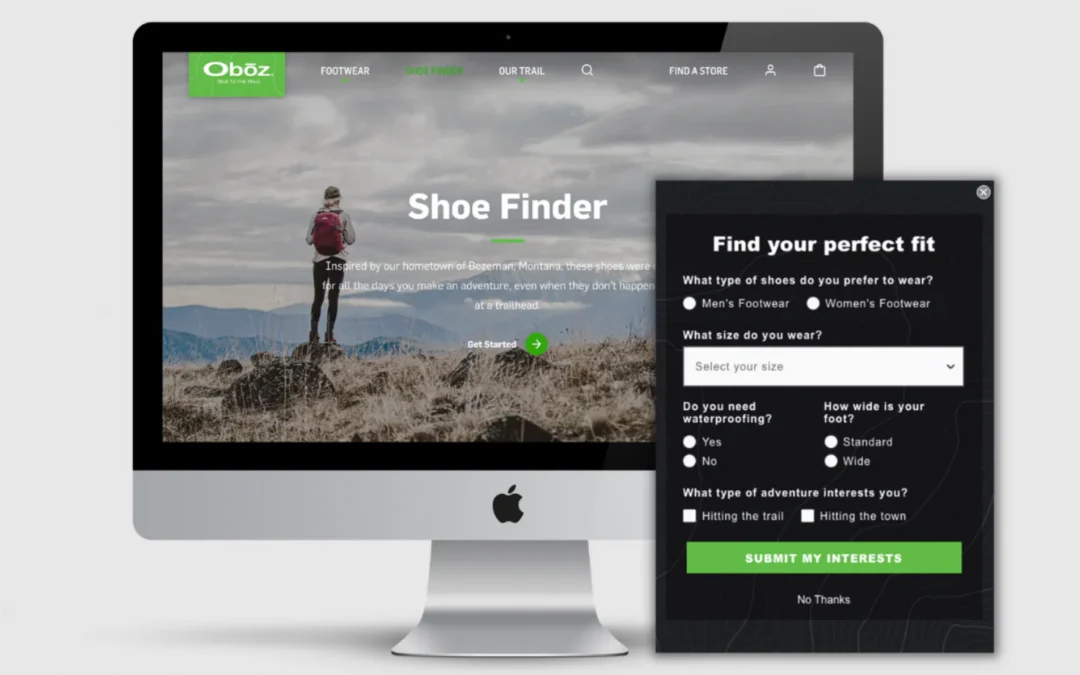What Is (Profitable) Personalization?
It’s probable that if you work in eCommerce, you can open your inbox right now and find at least one invitation to learn more about a software, a webinar, or a strategy for personalizing the eCommerce customer journey (and for good reason). Why? Personalization is that important. In an eCommerce world ravaged by out-of-stock notifications, inflation, increasingly strict privacy restrictions, and product alternatives available at a customer’s fingertips, personalization has become the expectation. In fact, McKinsey recently reported that 72% of consumers expected brands to see them as an individual and understand their individual needs. For the 2022 consumer, personalization requires so much more than just adding a first name to the introduction of an email. A modern personalization strategy must be developed and leveraged to ensure the long-term success of an eCommerce brand.
We define personalization as providing unique and personal experiences across the user journey using data granted with permission to surprise and delight. Personalization becomes profitable when you combine your customer, campaign, and catalog data to deliver those experiences.
A successful (and profitable) personalization strategy will:
- Eliminate wasted ad spend
- Protect consumer privacy
- Increase customer lifetime value
You Customer Data (And Customers Are Willing To Give It To You)
To implement an effective personalization strategy, you need customer data. There is no getting around it. The good news is, consumers are willing to give you that data if you provide them with a positive and personalized experience, in exchange. Merkle just released a report that found a staggering 90% of consumers were willing to share their data if they had a positive experience with a brand. Consumers want personalization and they’re willing to give you the data to create it, all you need to do is make sure that what you create adds value.
Bottom line, customers want:
- Personalization on par with Amazon and Netflix
- Knowledge of how you obtained their data
- Recognition as a result of providing their data
You can accomplish all of this by collecting customer preferences on site and in owned channels.
Collecting Customer Preferences
By collecting customer preferences on site and through owned channels, you are capturing the data you need to personalize the experience, the customer is aware of how you captured the data, and you can use the data to personalize the experience/offerings. Oboz, a leading outdoor brand, prioritized personalization and customer preferences across the entire customer journey. This enabled them to match the right product with the right customer at the right time (and in the right way) to move available inventory and eliminate wasted ad spend.
Keep reading to move through the various ways in which Oboz procures customer information and preferences in a way that is unique to both their audience and their brand.
Sign Up Forms
Collecting customer information typically comes in the form of a sign up form. This form is simple and requires only two fields but it still holds a strong brand voice and tone with it’s call to action to “Join us on the trail”.
.png)
Customer Product Preferences
To take it a step further, Oboz, with the capabilities of the BigCommerce API and the UX/UI design and development of The ZaneRay Group, developed the ‘Shoe Finder’ tool. A tool where users can answer a few questions and get recommendations on their perfect fit based on things like type of shoes preferred, size, whether they need waterproofing, and type of activities. This tool is a great example of customers providing data to a brand and the brand adding value to the customer’s experience.
.png)
Customer Communication Preferences
Once you have the customer data, make sure the customer knows the power of communication is still in their hands. Oboz makes it simple for customers to not only change their communication preferences, but they are also able to update their ‘perfect fit’ profile while they’re at it. Again, the emphasis is on the value being added to the customer’s experience.
.png)
Email Campaigns
Finally, showing customers you care about their individual needs is a must. Capturing the customer data isn’t the end of the story. Once a customer has given you their contact information and product preferences, it’s important to show that it is valued and they can expect to see the unique and personal experiences they are hoping for. Oboz dedicated an entire email campaign to asking customers to update their preferences.
.png)
You Have The Data, Now What?
“We’re like a lot of eComm businesses right now, wrestling with how to operate when inventory is constrained…that’s where Tadpull comes in”
Rich Hohne, Director of Brand + Consumer Experience
Oboz Footwear
Alright, so customer preferences have been captured and managed in a way that empowers and provides value to the customer. Those same preferences also provide the brand with the knowledge needed to match that customer with the right product at the right time. By leveraging Tadpull’s unique 1:1 data into inventory marketing efficiencies and exact product matching to match the right customer with the right product at the right time. By excluding out-of-stock items and pushing in-stock inventory to surface in real-time against customers in-market for those products, customers were exposed only to items they wanted and had the opportunity to purchase at that exact moment.

Eliminate Wasted Ad Spend Using Owned Channels
In the case below, Tadpull’s Pond software allowed Oboz to identify an excess of sizes in one product, match that product with the customer profile that best fit, and then promote within owned channels. This particular test saw a 123% increase in conversion rate. Matching the right customer to the right product and promoting in an owned channel eliminates ad spend, increases conversions, and provides the customer with the personalized experience they expect.


Privacy Concerns
It’s important to keep in mind that designing personalized user experiences in eCommerce has to be done in a way that shows you know your customer on a personal level but doesn’t go so far as to be deemed “creepy.” Long story short, you can’t simply purchase a dynamic creative ad on Facebook and call it good, but you also can’t go as far as saying “We know your credit score, household income, and favorite color, and you’re pre-qualified to purchase those skis you’ve been eying on our website!” It’s a fine line to walk.
Collecting customer preferences is the perfect example of data granted with permission.
Profitable Personalization In Summary
Personalization is the unique and personal experience across the user journey using data granted with permission to surprise and delight. When leveraged correctly, you can eliminate wasted ad spend, protect consumer privacy, and increase customer lifetime value. To get started, you need to do the following:
- Build Customer Data Now
If you haven’t already, invest in unifying, simplifying, and amplifying your data now. - Optimize Your Catalog Data
In order to turn inventory efficiently and eliminate wasted ad spend, catalog data must be at the marketing team’s fingertips. - Leverage Owned Channels
Eliminate wasted ad spend on unreliable channels (ahem, iOS anyone?). Boost margins by promoting the right product to the right customer using owned channels like email/SMS.
To learn more about how Oboz leveraged Tadpull software and services to grow revenue 38% month over month, access the workshop recording here.

